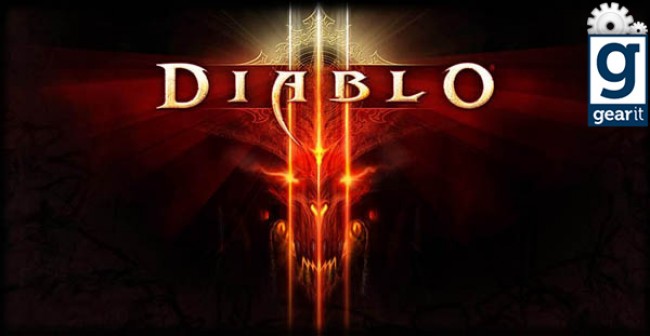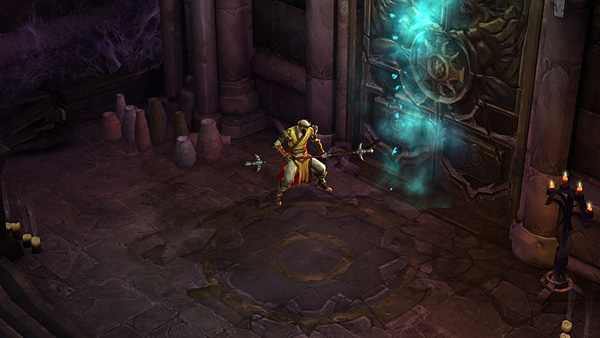LG’s 100-Inch QNED evo AI TV Redefines Big-Screen Viewing in South Africa In a bold leap forward for home entertainment, LG Electronics South Africa…
Diablo III — a hell of a good time [Review]

Diablo 3 is a nuanced game, and even though engineering, art, and design complement each other perfectly, it’s still not a perfect game. Nonetheless, it’s a hell of a good time.
‘Same same, but different’ — the popular Thai-English saying — has never had more meaning than when comparing Diablo 3 (D3) with its predecessors. With Diablo’s core mechanics in place, Blizzard Entertainment has managed the tightrope act of appealing to new fans while still pleasing diehards. Hack, slash and loot to your heart’s content, but this time enjoy more polish, less frustration and zero punishment.
All band together
Despite a predictable storyline, D3 offers a cohesive design unparalleled by today’s standards. If you’ve wondered why D3 took so long to come out, the answer lies in the delicate balance between engineering, art and design and how they interact with each other and the story.
Blizzard has achieved this by understanding what gamers want. Diablo fans want fast paced action and relentless clicking that makes things explode and gives you shiny things. Knowing this, Blizzard has incorporated clever tricks in how it presents the story and by streamlining everything from the skill and inventory system to the artisans and user interface (UI).
The pace is frenetic and never lets up. Even the story is creatively presented so that the action is barely interrupted. There are only four full motion video cutscenes (one per act) and most of the story is presented through audio clips in the form of Lore books, so that you can listen while you play. In fact you almost never have to stop: your followers and NPC’s deliver dialogue while fighting by your side, and if you do stop to talk to the townspeople, you can run away immediately and their dialogue still reads in the corner of your screen.
Now in 3D for the first time, Diablo 3 has upped the scale of battle and added dimension, giving depth and draw distance that trick you into believing that this ‘shallow world’ of clicking and looting has more substance than meets the eye. The 3D also gives the world physics, resulting in a satisfactorily destructible environment and entertaining death animations: don’t be surprised if you behead one demon, cut another in half, and explode five others all within the space of a few seconds… did I mention this is an R-rated game?
What the art designers have really achieved is mood. Through a fantastic use of colour, they’ve proven that you don’t need to grayscale or desaturate everything to have a ‘dark’ game. Areas that look like watercolour paintings are wonderfully contrasted between muted and vivid tones. Even the character design sees intelligent choices such as the rather square Barbarian distinct from the many circles and spirals of the Monk. Just as the Demon Hunter and Witch Doctor have gloomy colours which mimic their grim back stories, so does the Monk’s lightness harmonize with his story of serving the Gods.
Level design sees that the edges of an area are always the same, meaning that the artistic vision is kept intact, while the middle is endlessly randomised. And so each play through looks great, but plays completely differently.
Sound and music are also top-notch. While some might argue that the music was better in Diablo 2 (D2), Diablo 3’s guitar twangs give a blues feel to the world of Sanctuary and the voice acting is full of cheesy-goodness.
All NPC’s are voiced, including the three distinct followers that join you should you wish for company and some banter. Even the five character classes are gender-specifically voiced which helps present their back stories. Albeit breaking Diablo tradition of the voiceless hero, this goes a long way in making each character class feel unique.
Hovering over an item compares it to your equipped equivalent and holding ‘alt’ compares it to alternate hands. The artisans are hugely improved over D2’s, especially the blacksmith who can break items down into raw essences that can be used to build better items. And because it’s the same blacksmith throughout the game, he is both written into the story and designed to upgrade alongside your character.
The Gem artisan operates like the Horadric Cube in D2; he can combine lesser gems to make their better equivalents but this time he can also remove Gems from socketed items, for a nominal fee, without damaging the item or gem.
The only design choice that is puzzling is that the blacksmith can’t repair items; you have to go to a merchant rather. In a game full of UI improvements, including permanent town portal and health potion hotkeys, this seems strangely out of place.
Tinker tailor demon hunter
Not much more has to be said about the new skill system than what was explored in Gearburn’s BETA hands on. D3 doesn’t ask you to plan out your character — it doesn’t even ask you to assign skills or attributes. But rather with each level up it asks you to play with the skills you unlock — simple as that.
It’s for the tinkerer in us all, encouraging experimentation rather than punishing us for bad planning. It’s a hotly contested design-choice, yet for all the naysayers out there ask yourself; why is it better to have to play with only two-five of 30 skills rather than all of them? D3 says don’t limit yourself, try all of them, find different combinations and most of all, have fun.
The amount of combinations is, after all, staggering. No two level 30 Barbarians will be the same (although they can be if you want), and playing co-op means you think about not only combinations of skills, but of parties too.
You’ve unlocked ‘permanent internet skill’
The Battle.net experience has had problems so far – some justified, and others not so much. Launch day was always expected to be bumpy for the most pre-sold PC game of all time and the login error 37 has resulted in some great internet humour over the last week. However, being online at all times, whether in single player or co-op, is quite a ridiculous ask. It’s DRM in disguise, and a way to manage the real money system of the Auction house when it finally launches, and even though Blizzard says it’s to prevent cheaters and enforce copy-protection, it also means you get things like lag in a single player game. Even Starcraft 2 had an offline option and so it’s baffling for Diablo 3 to not have one.
The clickmaster general
You have to take off your hype shoes when looking at Diablo 3. Its single-player won’t revolutionize dungeon crawlers for the next ten years — it’s Normal Mode is a bit short at 15-20 hours, and too easy. It’s also marred by the end-user nightmare of permanent-online, arguably Blizzard’s only (and biggest) mistake. Yet it’s still gorgeous looking and a ton of fun to play and Nightmare Mode already feels like a better challenge, so who knows how difficult Hell will be.
In co-op though, Diablo 3 is a balanced and cohesive experience. It’s frenetic, it’s violent and you really feel the ten plus years of development brimming to the surface. It’s the delicate balance of characters, the skills that you are not just asked, but encouraged to experiment with and the coherence of engineering, art and design that result in what is still the definitive dungeon crawler — one that others don’t have a chance in Hell at coming close to.


